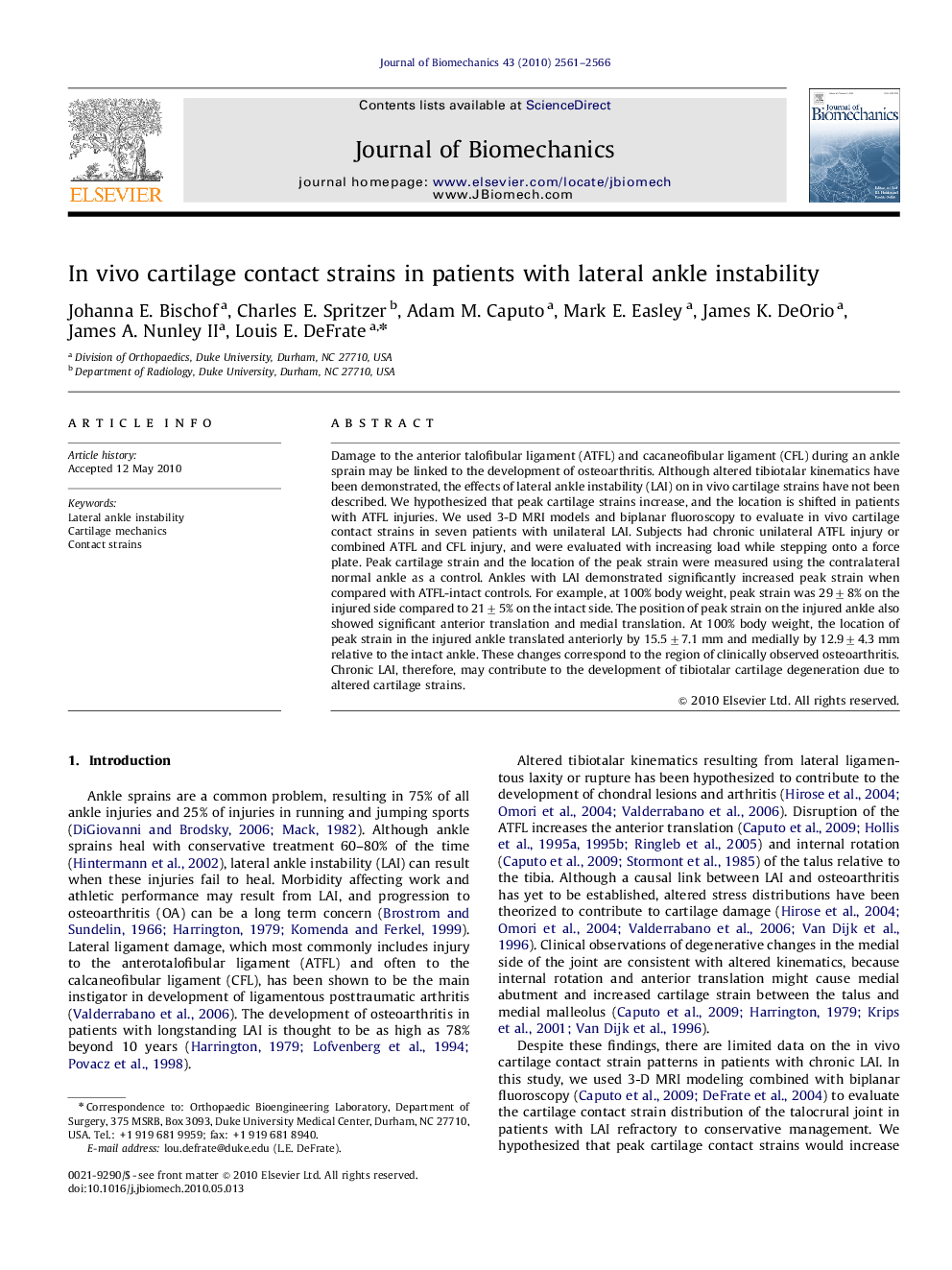| Article ID | Journal | Published Year | Pages | File Type |
|---|---|---|---|---|
| 873180 | Journal of Biomechanics | 2010 | 6 Pages |
Damage to the anterior talofibular ligament (ATFL) and cacaneofibular ligament (CFL) during an ankle sprain may be linked to the development of osteoarthritis. Although altered tibiotalar kinematics have been demonstrated, the effects of lateral ankle instability (LAI) on in vivo cartilage strains have not been described. We hypothesized that peak cartilage strains increase, and the location is shifted in patients with ATFL injuries. We used 3-D MRI models and biplanar fluoroscopy to evaluate in vivo cartilage contact strains in seven patients with unilateral LAI. Subjects had chronic unilateral ATFL injury or combined ATFL and CFL injury, and were evaluated with increasing load while stepping onto a force plate. Peak cartilage strain and the location of the peak strain were measured using the contralateral normal ankle as a control. Ankles with LAI demonstrated significantly increased peak strain when compared with ATFL-intact controls. For example, at 100% body weight, peak strain was 29±8% on the injured side compared to 21±5% on the intact side. The position of peak strain on the injured ankle also showed significant anterior translation and medial translation. At 100% body weight, the location of peak strain in the injured ankle translated anteriorly by 15.5±7.1 mm and medially by 12.9±4.3 mm relative to the intact ankle. These changes correspond to the region of clinically observed osteoarthritis. Chronic LAI, therefore, may contribute to the development of tibiotalar cartilage degeneration due to altered cartilage strains.
